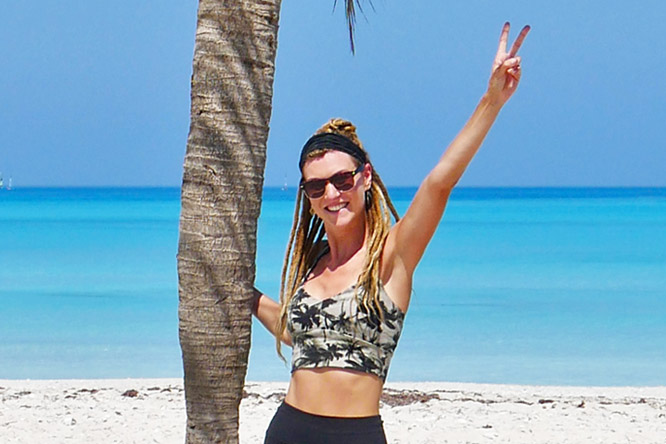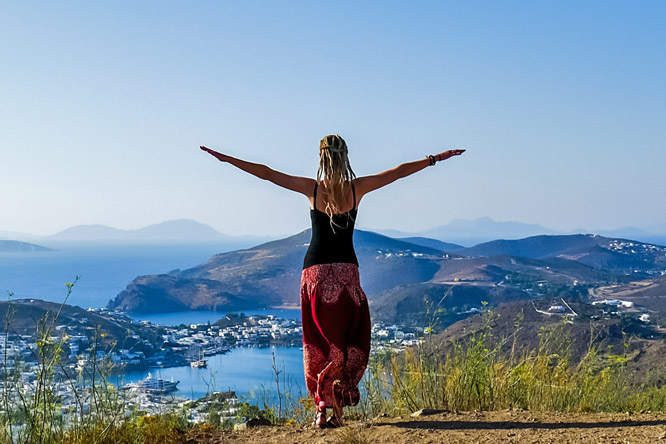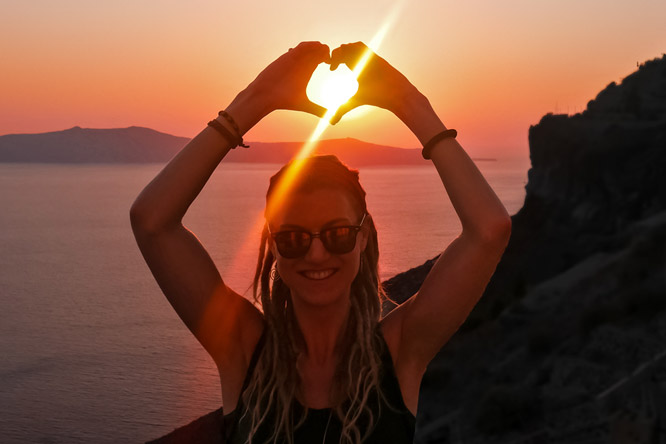Highlights (Yucatán)
- Playa del Carmen: My home!
- Tulum: Mayan ruins at the beach and amazing parties
- Chichen Itza: Former Mayan city and a World Heritage Site
- Holbox: An island paradise
- Bacalar: Lagoon with crystal clear freshwater
- Cozumel: Must visit for every scuba diver
- Cenotes: Choose from thousands of different natural pools
- Isla Mujeres: Cute island close to Cancun
- El Cuyo: Chilled small beach town
Food & Drink
Taco, Guacamole, Quesadilla, Tostada, Enchilada, Tamale, Huarache, Champurrado (hot chocolate), Margarita, Michelada
Capital: Mexico City
Population: 130 million
Total Area: 1,972,550 sq km / 761,610 sq mi
Highest Point: Pico de Orizaba (5,636 m / 18,491 ft)
Calling Code: +52
Motto: The Homeland is First
Mexican Peso MXN
- MXN 10 = 0.55 € = US$ 0.6
- MXN 181.42 = 10 € = US$ 10.87
- MXN 166.91 = 9.20 € = US$ 10
You can find ATMs easily, but they sometimes charge high transaction fees. Therefore, I prefer paying with a credit card when possible.
If you buy something at the beach, on the street, or take a taxi you need cash. It’s ideal if you have an idea about the price before you buy something, so you won’t get ripped off. Since many vendors don’t have change it’s best to have the appropriate amount of money ready instead of big bills.
I was surprised by the prices in the supermarkets and stores. They are similar to European rates and have increased substantially in the last years. In the Yucatan region where I live, there are many tourists who influence prices and in addition, there is no agriculture so most things have to be imported from other parts of Mexico. However, transportation and rent are cheaper than in Europe.
Official: Spanish
Indigenous: 63 recognized Indigenous languages
Mexican Spanish differs slightly from the Spanish spoken in Spain, with unique variations in pronunciation, vocabulary, and grammar. As you travel through Mexico, you’ll encounter various regional dialects, each adding to the country’s rich cultural tapestry.
Mexico is home to 68 national languages, including 63 indigenous languages spoken across different regions. Languages like Nahuatl, Maya, Mixtec, and Zapotec reflect the country’s vibrant indigenous heritage. Exploring these languages offers a deeper connection to Mexico’s history and culture.
The Yucatán region, where I live, is a popular tourist destination and most locals speak English. However, in other parts of Mexico, English is less common. When traveling outside tourist hotspots, tools like Google Translate and non-verbal communication through gestures and signs can be very helpful. Embrace the local languages with apps like Duolingo for a fun and engaging way to learn Spanish on your travels.
🚖 Taxi: Taxis usually have fixed prices for different destinations, but it’s common for drivers to charge unsuspecting tourists double or even triple the standard fare. In popular tourist spots, you might get a better rate by walking a few blocks away from the main area. Before hopping into a taxi, it’s wise to ask about the fare from someone at your accommodation. If you’re unsure of the price, try negotiating to bring the cost down. In some places, there are taxi stands with posted fare lists, which can be helpful for avoiding overcharges.
Example: Cancun Airport to Playa del Carmen, ca. 1-hour ride, MXN 1400 (71 €/US$ 76)
🚐 Colectivo: My favorite way to travel! The word “Colectivo” means “collective” or “shared”, perfectly describing this communal transport method where passengers share the ride and cost. These minivans operate on set routes but without a strict schedule. Colectivos are perfect for short and medium-distance travel within and between cities. They have some fixed stops but will often pick up or drop off passengers anywhere along the route. Departure times are flexible, based on passenger load or the driver’s discretion.
But be aware: the van can get cramped and hot, as they take as many passengers as possible, even if it means standing. You should only bring luggage or a bag that fits on your lap.
Examples: Within Playa del Carmen, MXN 10 (0.5 €/US$ 0.5);
Cancun to Playa del Carmen, ca. 1-hour ride, MXN 50 (2.5 €/US$ 3)
🚍 Bus: Buses in Mexico are another fantastic and affordable way to get around. Within cities, buses are very cheap and have fixed stops, although they occasionally make unscheduled stops. For long-distance travel, I recommend the ADO bus. These buses are comfortable, equipped with bathrooms, and sometimes show movies or play Mexican music. However, they can be a bit chilly, so I always bring a jacket or blanket.
Examples: Within Playa del Carmen, MXN 7 (0.4 €/US$ 0.4);
Cancun to Bacalar, ca. 5.5-hour ride, MXN 350-700 (18-35 €/US$ 19-38) depending on the day and time
✈️ Plane: For long distances, flying is often the best option. Mexico is a large country, and national flights can offer great deals, making air travel both efficient and economical. Flying can save you time and hassle.
Example: Cancun to Mexico City, 2.5-hour flight, MXN 1500 (76 €/US$ 81)
🚆 Train: The Tren Maya is a new addition to Mexico’s transportation network. However, I can’t recommend it due to its significant negative environmental impact. While it promises to connect various regions and boost tourism, it is destroying large parts of the Selva Maya jungle, resulting in a high environmental cost.
Mexico is a beautiful country with vibrant cities and charming small towns, but like any destination, it’s important to be aware of safety concerns. Cities like Mexico City and Guadalajara are bustling with culture and activity but do have areas where crime rates are higher. It’s best to avoid neighborhoods known for gang violence and other criminal activities.
If you are walking around in a less safe place, refrain from wearing jewelry, expensive watches, or anything that screams “I have money”. Maintain a confident, upright posture and avoid showing fear or unease. A “victim posture” can attract criminals, not just in Mexico but anywhere. Always be aware of your surroundings and the people near you. If you do encounter a robbery, stay calm, never argue or fight the aggressor, and give them what they want.
As a foreigner, especially as a solo female traveler, you’ll likely be approached by locals wanting to sell you something, chat, or make advances. A polite “no, gracias” usually works, but if it doesn’t, firmly say “no” again, keep walking, and ignore them.
The Yucatán region is generally very safe for tourists, but there can be issues with police who sometimes fabricate traffic violations or even plant drugs on tourists in rental cars to extort money.
What actually scares me the most while living here are the street dogs, which can be a bit aggressive. If a barking dog approaches, it’s best to pick up a stone. Most of the time, just holding the stone and showing it is enough to deter the dog. If it doesn’t, throwing the stone usually makes them run away.
🌎 General Info
Capital: Mexico City
Population: 130 million
Total Area: 1,972,550 sq km / 761,610 sq mi
Highest Point: Pico de Orizaba (5,636 m / 18,491 ft)
Calling Code: +52
Motto: The Homeland is First
💰 Currency
Mexican Peso MXN
- MXN 10 = 0.55 € = US$ 0.6
- MXN 181.42 = 10 € = US$ 10.87
- MXN 166.91 = 9.20 € = US$ 10
You can find ATMs easily, but they sometimes charge high transaction fees. Therefore, I prefer paying with a credit card when possible.
If you buy something at the beach, on the street, or take a taxi you need cash. It’s ideal if you have an idea about the price before you buy something, so you won’t get ripped off. Since many vendors don’t have change it’s best to have the appropriate amount of money ready instead of big bills.
I was surprised by the prices in the supermarkets and stores. They are similar to European rates and have increased substantially in the last years. In the Yucatan region where I live, there are many tourists who influence prices and in addition, there is no agriculture so most things have to be imported from other parts of Mexico. However, transportation and rent are cheaper than in Europe.
🗣️ Languages
Official: Spanish
Indigenous: 63 recognized Indigenous languages
Mexican Spanish differs slightly from the Spanish spoken in Spain, with unique variations in pronunciation, vocabulary, and grammar. As you travel through Mexico, you’ll encounter various regional dialects, each adding to the country’s rich cultural tapestry.
Mexico is home to 68 national languages, including 63 indigenous languages spoken across different regions. Languages like Nahuatl, Maya, Mixtec, and Zapotec reflect the country’s vibrant indigenous heritage. Exploring these languages offers a deeper connection to Mexico’s history and culture.
The Yucatán region, where I live, is a popular tourist destination and most locals speak English. However, in other parts of Mexico, English is less common. When traveling outside tourist hotspots, tools like Google Translate and non-verbal communication through gestures and signs can be very helpful. Embrace the local languages with apps like Duolingo for a fun and engaging way to learn Spanish on your travels.
🚘 Transport
🚖 Taxi: Taxis usually have fixed prices for different destinations, but it’s common for drivers to charge unsuspecting tourists double or even triple the standard fare. In popular tourist spots, you might get a better rate by walking a few blocks away from the main area. Before hopping into a taxi, it’s wise to ask about the fare from someone at your accommodation. If you’re unsure of the price, try negotiating to bring the cost down. In some places, there are taxi stands with posted fare lists, which can be helpful for avoiding overcharges.
Example: Cancun Airport to Playa del Carmen, ca. 1-hour ride, MXN 1400 (71 €/US$ 76)
🚐 Colectivo: My favorite way to travel! The word “Colectivo” means “collective” or “shared”, perfectly describing this communal transport method where passengers share the ride and cost. These minivans operate on set routes but without a strict schedule. Colectivos are perfect for short and medium-distance travel within and between cities. They have some fixed stops but will often pick up or drop off passengers anywhere along the route. Departure times are flexible, based on passenger load or the driver’s discretion.
But be aware: the van can get cramped and hot, as they take as many passengers as possible, even if it means standing. You should only bring luggage or a bag that fits on your lap.
Examples: Within Playa del Carmen, MXN 10 (0.5 €/US$ 0.5);
Cancun to Playa del Carmen, ca. 1-hour ride, MXN 50 (2.5 €/US$ 3)
🚍 Bus: Buses in Mexico are another fantastic and affordable way to get around. Within cities, buses are very cheap and have fixed stops, although they occasionally make unscheduled stops. For long-distance travel, I recommend the ADO bus. These buses are comfortable, equipped with bathrooms, and sometimes show movies or play Mexican music. However, they can be a bit chilly, so I always bring a jacket or blanket.
Examples: Within Playa del Carmen, MXN 7 (0.4 €/US$ 0.4);
Cancun to Bacalar, ca. 5.5-hour ride, MXN 350-700 (18-35 €/US$ 19-38) depending on the day and time
✈️ Plane: For long distances, flying is often the best option. Mexico is a large country, and national flights can offer great deals, making air travel both efficient and economical. Flying can save you time and hassle.
Example: Cancun to Mexico City, 2.5-hour flight, MXN 1500 (76 €/US$ 81)
🚆 Train: The Tren Maya is a new addition to Mexico’s transportation network. However, I can’t recommend it due to its significant negative environmental impact. While it promises to connect various regions and boost tourism, it is destroying large parts of the Selva Maya jungle, resulting in a high environmental cost.
⚠️ Security
Mexico is a beautiful country with vibrant cities and charming small towns, but like any destination, it’s important to be aware of safety concerns. Cities like Mexico City and Guadalajara are bustling with culture and activity but do have areas where crime rates are higher. It’s best to avoid neighborhoods known for gang violence and other criminal activities.
If you are walking around in a less safe place, refrain from wearing jewelry, expensive watches, or anything that screams “I have money”. Maintain a confident, upright posture and avoid showing fear or unease. A “victim posture” can attract criminals, not just in Mexico but anywhere. Always be aware of your surroundings and the people near you. If you do encounter a robbery, stay calm, never argue or fight the aggressor, and give them what they want.
As a foreigner, especially as a solo female traveler, you’ll likely be approached by locals wanting to sell you something, chat, or make advances. A polite “no, gracias” usually works, but if it doesn’t, firmly say “no” again, keep walking, and ignore them.
The Yucatán region is generally very safe for tourists, but there can be issues with police who sometimes fabricate traffic violations or even plant drugs on tourists in rental cars to extort money.
What actually scares me the most while living here are the street dogs, which can be a bit aggressive. If a barking dog approaches, it’s best to pick up a stone. Most of the time, just holding the stone and showing it is enough to deter the dog. If it doesn’t, throwing the stone usually makes them run away.
😍 Highlights
Highlights (Yucatán)
- Playa del Carmen: My home!
- Tulum: Mayan ruins at the beach and amazing parties
- Chichen Itza: Former Mayan city and a World Heritage Site
- Holbox: An island paradise
- Bacalar: Lagoon with crystal clear freshwater
- Cozumel: Must visit for every scuba diver
- Cenotes: Choose from thousands of different natural pools
- Isla Mujeres: Cute island close to Cancun
- El Cuyo: Chilled small beach town
Food & Drink
Taco, Guacamole, Quesadilla, Tostada, Enchilada, Tamale, Huarache, Champurrado (hot chocolate), Margarita, Michelada













